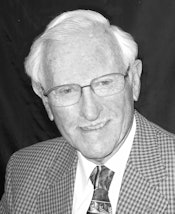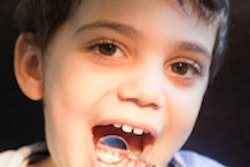
Using dental therapists (DTs) in school-based programs is the best way to improve access to oral healthcare for underserved children, according to the authors of an article in the American Journal of Public Health (June 2014, Vol. 104:6, pp. e1005-e1009).
Disparities in dental healthcare among economically disadvantaged populations are well known, and children suffer disproportionately and most severely from dental diseases, according to the authors of the analytic essay. Many countries have school-based dental therapist programs to meet children's primary oral healthcare needs.
The authors noted that children should receive priority preference; therefore, the most effective and economical utilization of DTs will be as salaried employees in school-based programs, beginning in underserved rural areas and inner cities.
 Jay W. Friedman, DDS, MPH.
Jay W. Friedman, DDS, MPH."Expansion of the dental workforce to include dental therapists offers the potential for improvement," wrote the authors Jay W. Friedman, DDS, MPH, and Kavita Mathu-Muju, DMD, MPH. Dr. Friedman is a dental consultant in Los Angeles, and Dr. Mathu-Muju is an assistant professor at the University of British Columbia Faculty of Dentistry.
More than 14,000 DTs practice in more than 54 countries worldwide, including New Zealand, Australia, Canada, the U.K., and, most recently, the U.S., in Alaska and Minnesota. High school graduates are trained in a two-year program to provide preventive and restorative dental care, usually for children.
Dental therapist programs have been studied extensively in several countries, and studies show the quality of care, which includes preventive and restorative treatment for more than 90% of school-aged children through high school, has been consistently documented to equal care provided by dentists, according to the authors.
School-based dental therapists are salaried public health workers, and the overall cost of providing care to children in schools is thus significantly lower than the cost of private dental care, according to previous research (Am J Public Health, September 2013, Vol. 103:9, pp. e7-e13).
Opposition
The ADA and most state dental associations have opposed the adoption of dental therapist training and practice in the U.S., mainly by asserting that it represents a second-class or inferior level of care. However, this claim has been refuted by numerous studies, the authors noted.
Some private practitioners oppose DTs in the belief that the problem is not a shortage of dentists but rather their distribution, they noted. Others are more concerned with how dental therapists might adversely affect their practices and diminish their income.
The ADA contends that a major barrier to treating poor children is low Medicaid reimbursements, which do not cover the actual cost of treatment, much less yield a profit, the authors stated. However, they pointed out that when Indiana increased Medicaid dental fees, dentist participation rose 42% but utilization increased by only 18%. "Overall, raising Medicaid payments has had minimal effect on utilization," they noted.
Dental therapists are not intended to compete with dentists, the authors wrote. As part of the public health infrastructure, DTS are intended to treat a portion of the population, particularly poor children in rural areas and inner cities that, for various reasons, cannot obtain care in the private practice delivery system. More than 43 million children are covered by Medicaid and the Children's Health Insurance (CHIP) programs in the U.S., while only about 20% of practicing dentists accept Medicaid recipients.
Too few dentists in underserved areas
Dental therapists are endorsed by the American Public Health Association, the American Association of Public Health Dentistry, and the American Dental Hygienists' Association as a successful model for increasing access to care for underserved populations.
In addition to Medicaid reimbursements, access to care is further limited when too few dentists practice in underserved areas. "This maldistribution of the healthcare workforce in relation to need could be addressed with the development of a targeted, school-based system of care," the authors wrote.
Many areas of the country have a dentist shortage, which is increasing as the population continues to grow, despite the opening of nine dental schools between 1997 and 2011, with more in development, they noted. In fact, the number of new dentists is barely keeping up with the rate of retirement, which is why many states are considering legislation for the training of DTs to serve their underserved populations.
In the U.S., 9,642 additional dentists would be needed for the 4,639 recognized dental health professional shortage areas to reach a dentist-to-population ratio of 1 to 3000, the minimal number that can be expected to alleviate the shortage situation, the authors noted.
"Poor, underserved populations are located within cities -- the so-called inner cities which are hardly remote. Not every midlevel provider wants to practice in a city," Dr. Friedman told DrBicuspid.com. "Given the right opportunity, with adequate financial and administrative support, rural practice has many attractions."
Economics of dental therapists
To become a dentist requires about eight years of postsecondary education. But dental hygienists and DTs can be trained in two-year programs after graduating high school, the authors noted.
“The school-based oral healthcare program staffed by dental therapists is not the only option. It is simply the best.”
Reported total expenditures for four years of dental school average $312,000 for public and $233,000 for private schools. The average tuition and fees for a minimal two-year dental hygiene program is about $36,000. Because the cost to train a DT is about the same as for a dental hygienist in a two-year program, at least five DTs could be trained in two-fifths the time at the same equivalent cost as one dentist, according to the authors.
The cost of setting up and maintaining a dental office -- dental equipment, supplies, utilities, rent -- is the same, whether for a dentist or a DT, they noted. The difference in cost is in their salaries.
The average net income of dentists in private practice in 2009 was nearly $213,000. Employed general dentists averaged $123,000. Pediatric dentists averaged $312,000.
The mean annual income for dental hygienists working full time reported in a 2007 survey was $56,810. If the DT's salary is compared with the average net income of a general dentist in private practice who provides the same services, the potential net savings is $148,000, or 69%, the authors noted.
"By employing a dental therapist at half or less than the salary of a dentist, the practice could afford to serve Medicaid patients, as well provide care to poor, uninsured patients," Dr. Friedman stated.
Studies have documented the cost-effectiveness of DTs, relative to dentists, particularly in programs for children, including those in New Zealand, Australia, and Canada, according to the authors.
Financial support for DTs will vary depending on their employment. In a school-based program, their salaries could be paid out of the school district's budget, as they are for school nurses, they noted. The budget could be subsidized by Medicaid, preferably on a capitated basis.
For therapists employed in a federally qualified health center, Medicaid reimbursement could be a lump sum per encounter or fee for service. A private dental practice that employs a DT will bill whatever source is available -- commercial insurance, Medicaid, or the patient -- usually as fees for service.
School-based programs
School-based healthcare has a long history in the U.S. Today, more than 73,000 full- or part-time registered nurses provide healthcare for children in schools, according to the authors. In some schools, dental hygienists provide dental screenings and preventive dental services, with referral to dentists for children who need definitive care for fillings and other pathology.
A few schools have visiting dentists in mobile trailers who provide commendable care, but they are too few and too expensive to meet the needs of tens of millions of poor, neglected children, the authors noted.
"School-based dental therapists provide not only restorative treatment but also prevention, including topical fluoride application, sealants, and personal and classroom health education for all the children," Dr. Friedman said.
Children, as well as adults confined in institutions such as nursing homes, are essentially nonambulatory. They require a caretaker with the time, the means, and the money to take them to the dental office. Many economically disadvantaged children lack that caregiver. "What would be more logical than to bring the necessary care to them in public schools?" the authors wrote. "Providing necessary dental care to children in their schools is an international practice of documented effectiveness."
Conclusion
"Whether care is provided in schools, community health centers, or private practices, the concept of social justice demands that priority be given to those least able to care for themselves: children," the authors concluded. "The highest priority is assigned to those who are most disadvantaged."
It need not exclude employment of DTs in federally qualified health centers and even private practices in underserved areas. But limited resources dictate that the highest priority should be given to oral healthcare for children in schools, they wrote.
"The school-based oral healthcare program staffed by dental therapists is not the only option," they wrote. "It is simply the best."



















